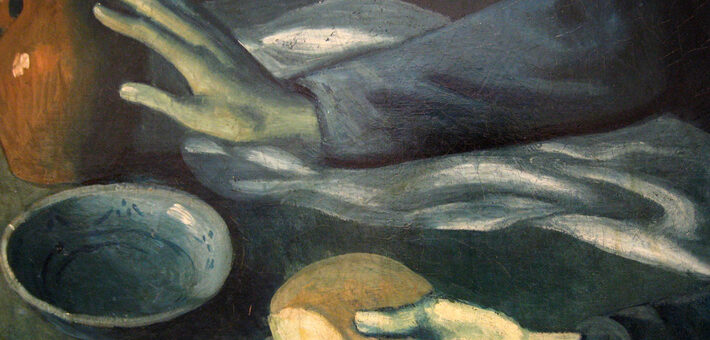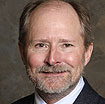Commentary on Colossians 2:6-15 [16-19]
This can be a very challenging passage to interpret. It contains a number of rather unique images and metaphors, uses words and concepts that are rare or unique in the New Testament, and unfolds in very dense sentences populated with numerous subordinate clauses.
What is most important to realize when dealing with this passage in particular (though it also applies to much of Colossians) is that this author (probably not Paul) is writing to warn his audience about the false teachings of some who claim that in order be in full relationship with God one needs to have mystical visions and ecstatic experience as they have had. Thus the author is opposing those who see themselves as being on a higher spiritual plane or are more fully with God because of their visionary experiences.
In this text, the author will argue two related points, one positive and one negative. Positively, he wants to let his audience know that they are already fully experiencing a relationship with God because of what God has done for them in Jesus Christ. Negatively, he seeks to make it quite clear that these vision quests and their requirement are not only unnecessary but are detrimental in a number of ways.
The brunt of the negative arguments are in 2:8, 16-19, which are introduced with negative warnings or commands (“see to it,” 2:8; “don’t let anyone judge you,” 2:16; “don’t let any disqualify you,” 2:18). In 2:8 such teachers are imaged as those who take people captive as booty or as prisoners. Their teachings are classified as empty and deceitful philosophy whose standards are human tradition or elementary concepts rather than according to the standard of Christ.
In 2:16 the audience is told that these visionaries pass judgments against others on the basis of their use of food, drink, and special days to enhance their ecstatic experiences. In 2:18 they are imaged as judges in an athletic contest who disqualify participants when they do not have the same experiences as they have had. In light of such wrong outlooks and insistences, the author concludes that they are arrogant with minds attuned to sinful things and have detached themselves from Christ, who is the unifying head of the Church (2:18b-19).
In emphatic distinction to such theological practices and judgments, the author presents extensive explanations of Christ’s reality and so our reality in Christ. It is important to note that at least six times the phrase in him/whom is used wherein the object of the preposition is Christ (2:6, 7, 9, 10, 11, 12 and possibly 2:16). This builds on the previous nine uses of “in Christ/in him” (1:2, 4, 14, 16, 17, 19, 22, 28; 2:3) wherein Christ is either the sphere of reality in which we now dwell or Christ is the person in whom God is actively at work.
Thus in 2:6-7 the audience is exhorted to make their conduct reflective of the reality in which they now dwell (which is Christ) by continuing to be rooted (agricultural image) and built up (architectural image) in this Christ reality. In 2:9 the emphatic theological claim is made that all the fullness or entirety of God’s deity dwells in Christ (expanding on the previous claim in 1:19). For the recipients this means that they have been continuously made full in Christ (2:10a). The Greek construction of 2:10a highlights that this is an ongoing divine reality and activity that was initiated in the past and continues into their present and future. Hence the opposing claims of the visionaries are both false and ludicrous.
In 2:10b and 2:19 Christ is imaged as the head (recalling 1:18). Thus Christ is the supreme ruler over every human and cosmic ruler and power (2:10b), an anti-imperial declaration that counters Roman propaganda that the gods have made them the rulers over the inhabited world. Ecclesiologically, Christ is also the head of the church, which is his body so that Christ is the unifying reality, and the nourishing force of our communal existence (2:19; also see 1:18, 24; 2:17; 3:15).
In 2:11-15 the author uses the imagery of circumcision and the actual rite of baptism to describe our former and current realities. All who were baptized (gender inclusive) experienced a type of circumcision in that they were inaugurated into God’s people and transferred out of the realm where sin enslaves our existence (2:11 recalling the claims of 1:13-14). By depicting this as the circumcision of Christ (2:11b), the author is highlighting that Christ is our new reality and identity.
This also sets up his claim that in baptism we were both buried and raised with Christ (2:12a). Here the author is drawing on Paul’s understanding of baptism in Romans 6:1-7 with one prominent theological shift. In Paul’s view we are not yet raised with Christ whereas the author of Colossians understands our resurrection with Christ to have happened via baptism (thus one of the prime indicators that our author is not Paul).
Unfortunately almost all English translations miss the further claim of verse 12b of which the NRSV is typical: “you were also raised with him through faith in the power of God, who raised him from the dead.” In such a translation the means for our resurrection with Christ was our faith. The actual thrust of 2:12b, however, is that our resurrection with Christ was through the faithfulness of God’s who also raised Christ from the dead. Thus the whole emphasis in 2:10-15 is on divine activity that determines and shapes our reality.
Finally in 2:13-15 God eliminated our former reality in which we were dead in sinful conduct and made us alive by forgiving our sinful conduct. Thus God expunged the heavenly record of our sinfulness by nailing it to the cross where God also disarmed human and cosmic rulers and powers (recalling the claim of 2:10). In a closing flourish he draws on imagery from a Roman triumph in which the defeated imperial enemies are publicly paraded to demonstrate their defeat and disgrace as well as the power and honor of the Roman military. Ironically (even paradoxically), this grand, sweeping divine victory over the rulers and powers occurred in Christ’s crucifixion.


July 28, 2013